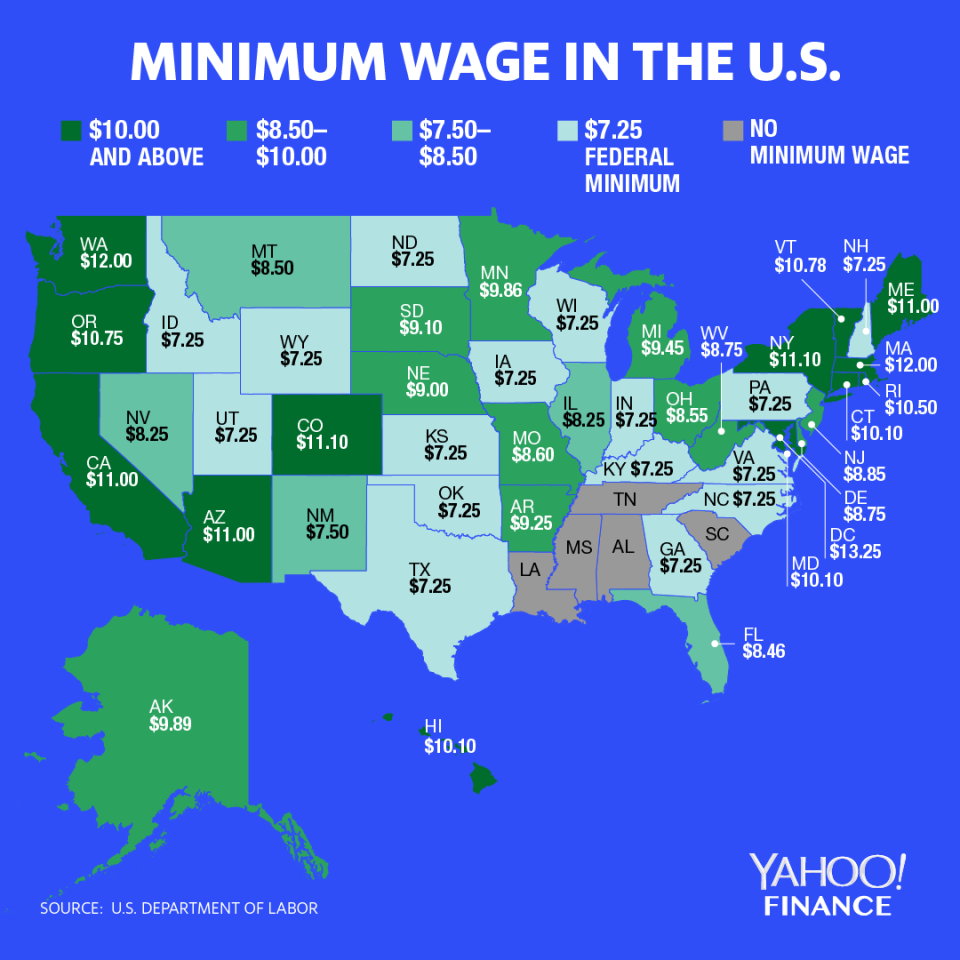Minimum wage hasn't been raised for the longest time in history
June 16 marked the 12th year that Congress hadn’t raised the federal minimum wage, the longest amount of time the minimum wage has remained unchanged since it was first established in 1938. The last time the U.S. government raised the minimum wage was in May 2007 — that decision increased wages to $7.25 an hour starting July 24, 2009.
Since the minimum wage was created in 1938, it has been irregularly increased at the will of Congress. According to the Economic Policy Institute (EPI), the minimum wage has received a boost nine times since 1938. In the last 81 years, the minimum wage has increased from 25 cents to $7.25.
A January poll found that 55% of registered voters said they would support raising the minimum wage to $15 per hour, and another 27% said it should be increased but to a lesser amount.
But despite the popularity of raising the minimum wage, Congress hasn’t acted on any measures in over a decade. EPI’s Senior Economic Analyst David Cooper says there has been “no openness” to do so among Republicans in Congress.
Weaker purchasing power
Until 1980, Cooper says, Congress increased the minimum wage “relatively regularly — every five years or so.” But in the last 40 years, he explained, Republicans started to strongly oppose minimum wage increases.
“It wasn’t raised at all during the Reagan administration,” he said. “That’s when we saw nine, 10 years between increases.”
While inflation levels are holding steady the purchasing power of the current minimum wage has steadily eroded over the last decade. Since the minimum wage was raised to $7.25, its purchasing power has declined by 17%. That’s a loss of $3,000 in annual earnings for full-time minimum wage workers. Since reaching its buying power peak in 1968, the minimum wage has lost 31% in purchasing power. That means that effectively, minimum wage workers are “earning” more than $6,800 less than they would have in 1968 — when the minimum wage was only $1.60.
“Imagine if someone took 30% out of your paycheck,” Cooper said. “They can afford 31% less than their counterparts five decades ago. That’s huge.”
But he explains this also has negative impacts on the economy, because the lowest-paid workers tend to inject their extra money right back into the economy.
“On a macro level, it’s also damaging,” Cooper said. “Seventy percent of the economy is consumer spending. We are shooting ourselves in the foot from a growth perspective.”

Fight for 15
Raising the minimum wage has been a priority for many politicians, particularly as the 2020 elections draw nearer. Rep. Alexandria Ocasio-Cortez (D-NY) recently attacked Amazon and its CEO Jeff Bezos for paying workers “starvation wages.” Amazon, which raised its minimum wage to all workers to $15 per hour, responded to the congresswoman, calling her allegations “just wrong.”
Presidential candidates Kamala Harris, Joe Biden, Bernie Sanders, Elizabeth Warren, Amy Klobuchar, Beto O’Rourke, Julian Castro and John Hickenlooper have all publicly declared to fight for a $15 minimum wage if they were to win the White House.
According to EPI’s analysis, raising the federal minimum wage to $15 would boost the pay for roughly 40 million workers — more than a quarter of the wage-earning workforce.
And with those boosted wages, Cooper says there would be a “modest stimulative effect” on the economy as consumer spending increased. But the real question is: Are businesses able to handle paying workers more without laying off employees?
“A fair reading on all the literature on this is that past increases of the minimum wage have had their intended effect,” he said. “If there is an impact on employment, it’s so small the benefits outweigh the negatives.”
There would also be knock-on effects to social welfare systems, already facing budget cuts.
“It definitely would reduce the number of people that rely on public assistance, without a doubt,” Cooper said. “This would save money in terms of social assistance savings.” While Cooper argues this money should be reinvested back into those programs, he admits that it would “free up dollars.”
Automatic increases
But the best way to solve the problem is by implementing an automatic annual minimum wage increase, also called indexing, Cooper said. It’s already in place in 18 states and the District of Columbia.
Earlier this year a federal bill was proposed to raise the minimum wage to $15 by 2024. Called the Raise the Wage Act of 2019, the bill would raise the minimum wage and then index wages in 2025 to median wage growth.
Currently, most states index wages by tying them to prices. This way, the minimum wage would increase by the same amount as inflation in the state. By indexing to median wage growth, the minimum wage adjusts automatically at the same rate as the growth in the median wage. According to EPI, the bill would also increase the minimum wage for tipped workers, “which has been fixed at $2.13 per hour since 1991, until it reaches parity with the regular minimum wage.”
Kristin Myers is a reporter at Yahoo Finance. Follow her on Twitter.
Read more:
Follow Yahoo Finance on Twitter, Facebook, Instagram, Flipboard, LinkedIn, YouTube, and reddit.
Read the latest financial and business news from Yahoo Finance
